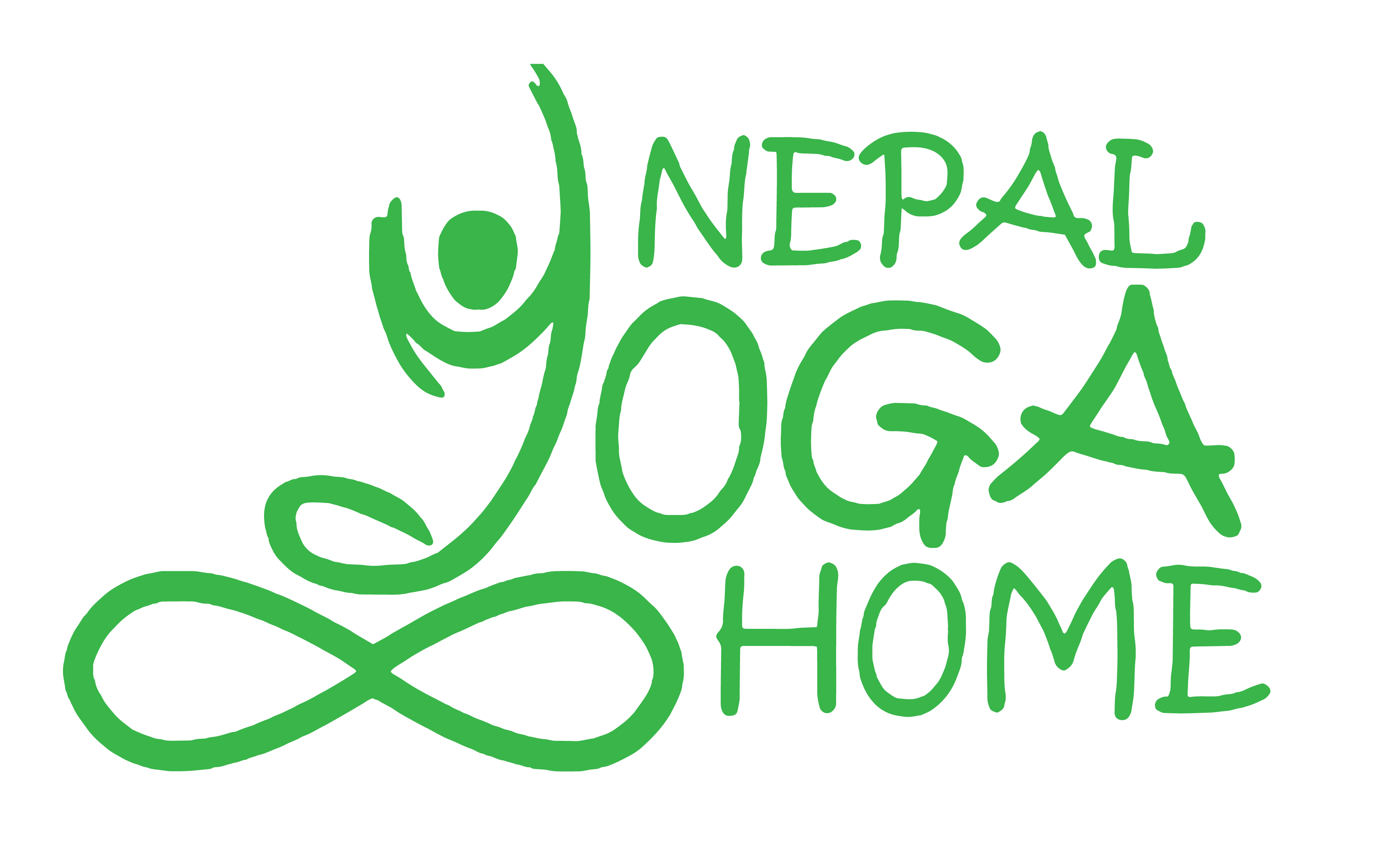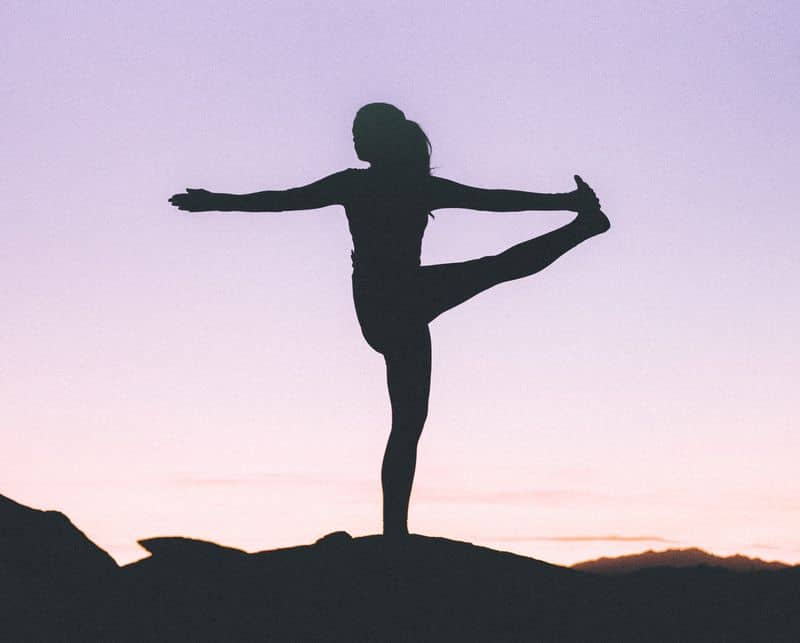
by Tirtha Acharya | Dec 18, 2020 | Yoga
General Professionalism in Yoga
Where yoga is all about control of one’s physical and mental activities but somewhere we can pour it as a way to perfect discipline. Hugging yoga as a profession is fun and challenging at the same time. A yogi or yogini should be mentally and physically prepared to face the challenge while doing that they should maintain professionalism in yoga too.
A good yoga teacher should show authenticity in their personality, they should have a kind of consistency in their energy and should possess an inspiring attitude. To have your career longevity in this field it is important to have cleanliness in your work.
How to maintain professionalism in yoga?
A yoga teacher should maintain personal relationships with the students but sharing unnecessary personal information with students can also change the classroom dynamics. A yoga teacher should maintain his/ her professionalism in yoga without getting too personal or without being strict. This does not mean you should not add anecdotes about your personal life but the stories that you are yelling should be clear and have perspective in it. You should not cross a boundary line as a teacher. Try to interact with all people, ask them questions, and answer their confusion.
How you could be different from other yogis?
Every job is full of competition and you should know how to flaunt your skills among so many other people. Your attitude, personality, and behavior should be acceptable and unique at the same time. Do not try to copy others. Just be yourself and reflect your thoughts and ideas in a rather interactive way. Being different will make you more interesting and fascinating. So do not try to be anyone’s copy just for impression. Being different will of course make you think differently from others.
Have creative ideas and tricks to help your students. Accept different choices and do not hesitate even to learn from your students. Answer the right questions and avoid the unnecessary one. Be open and aware of the ideas. Try your best to give everything you know to your students. Make sure you are giving the right things to your students. Know the abilities of each student and help them to grow according to that. Do not force and compare anyone with anybody. Be a great person in and out.
Creative thinking for professional yoga teacher
To balance your work with time is a difficult job. You need to have a time check and you should know exactly where you are spending your time. Plan your day and yoga classes so that everything starts and ends at the perfect time. List down all the yoga poses that you are going to teach your students. Complete them at the right time.
Start the most important yoga at first and follow it with other poses. Your students learn from your behavior. Never be a delay to class. Be punctual so that your students will also be punctual to class. It will not matter how good the personality you carry unless you are punctual with time. It shows true professionalism. Differentiate your world from your professional world. This will help you to manage your time a lot.
Need to know the Importance of cleanliness
Cleanliness is another important factor in yoga. As a yoga teacher, you should maintain your hygiene. Do not hesitate in instructing your students to maintain cleanliness and become a hygienic person. Every prop used in yoga-like yoga mats, blocks, straps, and bolsters should be clean. Good hygiene is important for social and health reasons.
Make sure you are not degrading your health along with others. Keeping your hands, body, and clothes clean is very important. Wear light and clean clothes. Do not decorate yourself with Jewellery and heavy accessories. Be simple and reflect your good side. Try to maintain cleanliness in a yoga pose and personal hygiene. It will help you to prevent all possible diseases. Poor hygiene can degrade your personality and no one will consider you a good person.
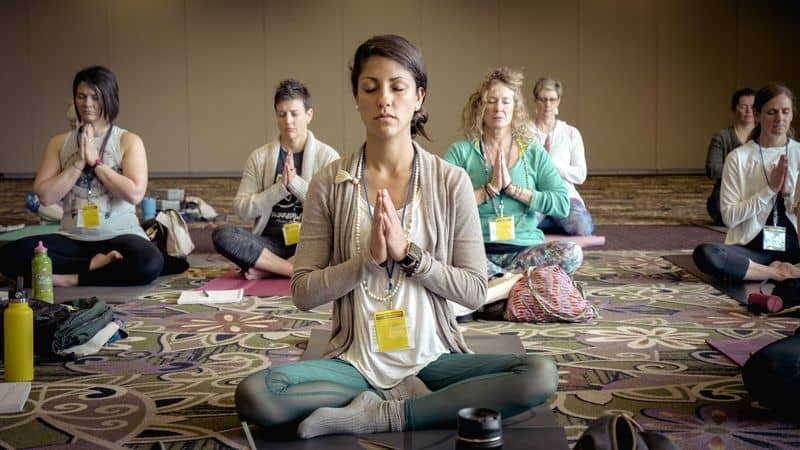
by Tirtha Acharya | Dec 14, 2020 | Yoga
How to Create Yoga Teaching Environment?
How to create and maintain a good yoga teaching environment has been a big question to the yoga institutes. When you step into a place to learn new things your worries and tension should be finally put to rest. The only best way to create such an environment for yoga students is to put yourself in your student’s shoes. When you will think of yourself as a newcomer coming to a yoga studio, then you can easily find the answer.
1. How to manage good environment of yoga hall?
When you enter a yoga class the first thing everyone notice is the environment setting. The atmosphere and the energy of the classroom during a yoga class are very important. Even if your yoga teacher will give you awesome yoga skills and doesn’t provide good class settings then it is very obvious that you won’t obtain the desired goals. It is important to learn yoga from a well-qualified teacher but it is also essential to learn yoga in a good environment. The yoga teaching environment is the primary need to learn yoga.
You can do your yoga anywhere but certain places are highly preferred for yoga. You should choose the right place where you can calm yourself down and make yourself free from worries and tensions. The yoga hall should be clean and light should easily pass through that room.
2. How to create a positive environment in surrounding?
Make your classroom a low-pressured, no judgemental, non-competitive, and full of encouragement. The ability of a person to do yoga may differ so reducing competition and judgment can help the students to feel safe. This will make the yoga teaching environment a beautiful place to explore new ideas. This environment is responsible to discourage ego and negative vibes while assuring each student that they won’t be judged. Not even one student should suffer and feel suffocated in the place. The yoga teaching environment will automatically get pure if you will remember these things.
Everything should be placed appropriately. The yoga teacher should feel comfortable telling their students in which to keep the yoga mat as a consequence that most of the students place it in a rather unorganized and chaotic way. This can create restless energy and people can feel difficult to relax in such settings. The yoga mat should be non-slippery, soft, and comfortable for lying positions. Placing the yoga mats at the right angle for perfect observation can help to create a good yoga teaching environment.
3. How to arrange yoga mat for perfect observation and correction?
Yoga studios should maintain a clean, visually appealing, and orderly space. Every student should be welcomed to get a retreat from the chaos of the day. To make the environment more positive try playing soothing music in the class. This will help the students to feel comfortable with the surrounding.
Don’t make the class boring. Use humor and sarcasm to make them laugh, extra things to avoid boredom, and a personal connection with each of the students. Introduce yourself to them and tell them to introduce themselves. Interact with every single person there. You need to make the class interactive. Ask them questions so they can avoid confusion. Don’t make your bad mood affect the yoga teaching environment.
The balance of the yoga teaching environment mostly depends upon the teacher. Encourage and support them to get to know one another and make them strong as a union. Use partner poses to build relationships between the students. Sharing the yoga tricks you know will help the students.
4. Mantra chanting to clean the environment
Mantra chanting can also bring positivity to the surrounding. It reduces toxins present in the environment, eliminates our stress, and can support health. It helps to develop one’s mental power withdrawing the senses from the external environment. It also helps to strengthen and ease the physical part of your body.
5. Way to develop a positive vibe in yoga practitioner
People get impressions from the outer world. Be aware of your outlook as it can influence the class energy. Loud colors, a lot of jewelry, and decorations can be kind of distracting during yoga class so wear light and simple clothes during yoga classes.
The yoga teaching environment should be positive and the above ways can make the environment soothing and positive. Overall these tips help to enhance the mindfulness of students. The positive environment there will help to enhance mental and physical capacity so it is very important to create a positive yoga teaching environment.
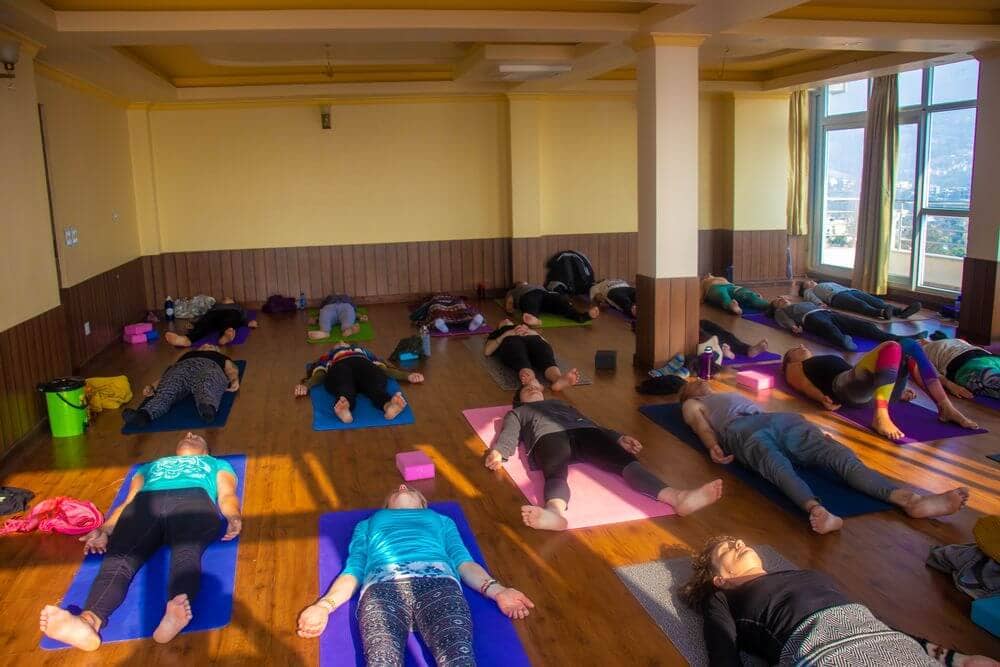
by Tirtha Acharya | Nov 30, 2020 | Yoga
Yogic Relaxation Techniques
How much are you interested in yogic relaxation? Are you bogged down with the stress and anxiety? For relaxation of mind, body and soul yoga has become an increasingly popular choice. It is a well-known fact that yoga has a wide range of benefits to the human health. If you are looking for answers to the above questions then this article is for you. In this article, we will delve into the ways to relax our mind, body and soul. We will further delve in to the effective relaxation techniques, and benefits of yoga to human health.
1. Full body relaxation
You do not need any sorts of high calorie engulfing yoga techniques to get full relaxation of the body. Yoga nidra is an ancient yet growing techniques, however a little known technique for the yoga practitioners to understand the full body relaxation. Full body relaxation is a special type of yogic relaxation. Full body relaxation is becoming an increasingly popular tool for both meditation as well as mind-body therapy to achieve the state of calmness. The technique is carried out for nearly 35-40 minutes at a time.
2. Tension relaxation
Following are the procedure to practice the tension relaxation.
- You need to focus on your breathe first to achieve the tension relaxation.
- Breathe in a bid to tense the first muscle groups.
- Breathe out to relax the muscles group.
- Practice it as many times.
- This will give you relaxation for at least 10 to 20 seconds before you start working on the next muscle group.
- If you are done with the various muscles groups then do it once again to get the magical benefits.
3. Heart centre yoga nidra
A special type of yoga nidra is called heart centre yoga nidra is one of the popular yogic relaxation process. In this space both love and spirit are connected. Heart is the place where both love, hatred, ego, trust are centered. The heart is also a nuance centre to experience the spirit, however it requires years of practice to feel the spirit at the centre of heart. Spirit is the place where the layers of sensations are present, and in a bid to experience it you must go beneath to experience them.
4. Subtle body relaxation
In the subtle relaxation techniques, the physical body is allowed to make the deep and better relaxation. If your body is deeply relaxed you achieve the higher level of peace. Your inner consciousness delve further inward and higher consciousness is achieved thus warding off or purging out the unwanted thoughts that plague your mind. By following such things you become powerful in the journey of yoga and feel the bliss of nature.
5. Chakra healing- a great yogic relaxation process
Balance in chakra will keep you calm. However, if there is any sorts of blockage in the chakra then it is obvious that the energy flow will be disrupted and body experience some sorts of physiological and psychological changes that is responsible for imbalance in the body and cause diseases, which might be in the form of disease, imbalance and psychological changes.
The first and foremost step in chakra healing is eating and living healthier lifestyle. You need to start with one chakra and slowly branch to another chakra to keep them calm.
6. Relaxation in daily life
Keeping your eyes away from the social medias.
Setting the goals and trying to achieve them everyday.
Loving thyself
Strolling outside
Sleeping and rising at a proper time
Breathing peace and exhaling peace.
Playing outdoor sports.
7. Sequence of yogic relaxation
First, close your eyes, however, it is not the prerequisite to practice you can also practice meditation with open-eyed.
Inhale peace and exhale the lungs with the air. Breathe out the peace.
Inhale oxygen to the level where your belly and lungs fully expand so that when you breathe out you all the toxic substances also comes out.
Repeat the process.
8. Mental relaxation through auto suggestion
Choose the position that best suits you for yogic relaxation,
Purge out the things that distract you the most.
Do not think about the distractions
Use the imagination techniques to picture a better world.
9. Relaxation with mantra
In this process, the practitioners repeat the same sets of words as a mantra and chanting mantras repeatedly.
What are the Benefits of Yoga Relaxation Techniques?
- Purges out the accumulated tension in your muscles and other parts of the body.
- Helps to increase the creativity of your thinking.
- Plummet anxiety and other sources of stress
- Provide sound sleep
- Increase the capability to learn and enjoy the surrounding.
- Increase the cognitive capacity
- Increase the brainpower
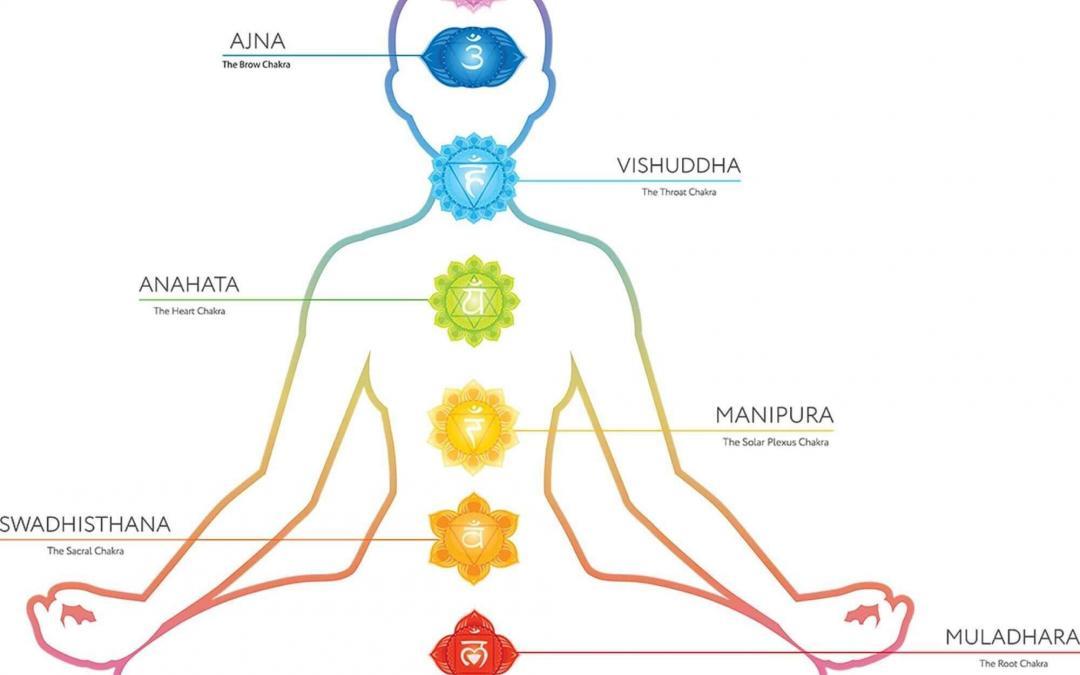
by Tirtha Acharya | Nov 27, 2020 | Yoga
In-depth details of Laya Yoga
The universal definition of yoga is to connect with the supreme power. Likewise, the literal meaning of yoga is union. Yoga can have a varied definition and sometimes be contradictory also. Many literatures has clearly illustrated that yoga is of four types. The first one is Mantra yoga, followed by Hatha yoga, Laya yoga, and Rajayoga.
The literal meaning of Laya is suspension from the materialistic world. Laya yoga helps you to put your attention and energy to the higher consciousness. By practicing Laya yoga you become connected with the supreme energy through which you thoroughly enjoy the bliss of nature. Likewise, the creativity and the consciousness come into action without being distracted from any sort of attachment and consciously bringing the awareness to the self.
What is Laya Yoga?
The form of yoga where we put our concentration in the center of the chakras. Altogether, there are seven energy centers, which are also called chakras. Laya yoga helps in channelizing the energy centers with the help of the power of meditation, which is located in the spin and the head and keeping you healthy and hearty.
With the practice of Laya yoga, you obliterate all the bad karmas you have accumulated in your life. Likewise, those who practice Laya yoga dissolve all the egos attached to them, and slowly shift towards the higher consciousness daily.
The nature of Laya Yoga
Laya yoga helps you to internalize and accumulate the dispersed energy inside your body by practicing laya yoga meditation. Energy, which is also, called Prana moves in a certain way and your 7 chakras get activated in your body. While in other forms of meditation or yoga you channelize the mind, or the twist and bend your body, not both. However, in Laya yoga, you channelize the Kundalini in your body and attain the peace and harmony in your life.
Kundalini must be opened through the practice of meditation or dhyana. Furthermore, the prana gets activated through the Pranayama or yoga allowing the positive energy dispersed in the whole body.
The goal
Just like any other form of yoga, Laya yoga also focuses on attaining a higher consciousness with Pranayama and meditation. Thereby preventing any sort of fluctuation of the mind.
How to practice
Be in a comfortable position. Upright your spine. Gently pull the root lock and neck lock of the body. Keep you both eyes closed and see your third eye point. Keep your left hand in the Gyan Mudra and rest them on the left knee. Now practice Anolom bilom, by first closing the right nostril with the thumb and repeating the same with the others. Keep breathing for a longer period. Continue the process for the next couple of minutes.
While practicing Laya yoga you need to do some visualization of the areas of the body. Scan the body starting from the head and ending to the tip of the toe. Feel the movement of the prana from one position to another just like the circulation happens in your body.
Change your hands if you feel exhausted. It takes time to be inured to practice. Practice with the alternate nostrils for the next couple of minutes. Inhale peace along with the air. And relax in the intermittent.
Benefits
– Awakens your internal energy
– Cleanse the mind, body, and soul.
– Helps to uplift the consciousness of the human being
– Opens up a higher level of consciousness.
– Locate and revitalize the different energy centers of the body.
– Keep you healthy and hearty.
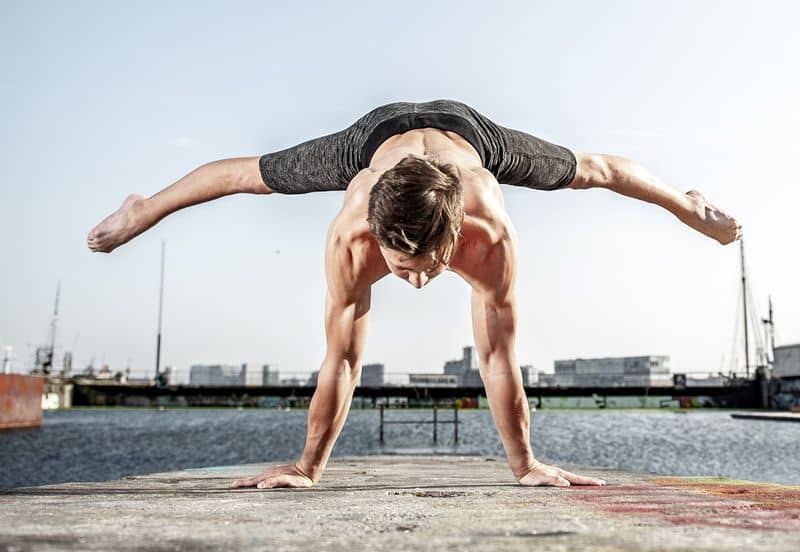
by Tirtha Acharya | Nov 19, 2020 | Yoga
Muscles contraction in yoga workout
We are familiar with the concept that yoga provides the human body with much-needed exercise and mental well-being. What we are not familiar with is the use of different muscle groups that enable us to achieve the said result. In this blog, we shall flow through the various muscles contraction in yoga workout that makes your yoga successful.
1. Isotonic contractions
An isotonic contraction is such in which the tension is virtually the same but the length of the muscle changes. An isotonic contraction is different from an isokinetic contraction in the sense that in isokinetic, the spread of muscle does not change. Furthermore, the isotonic contraction falls under two categories called concentric and eccentric.
a) Concentric contraction
The shortening of the muscle is known as concentric contraction. This movement is very common in numerous yoga workouts and other exercises. You might be wondering what this muscle contraction in yoga workout means. Fret not, as we shall explain this to you. For example, the standard bicep curl is a great example of concentric contraction.
The movement commences with the arm perfectly stretched. As the bicep contracts, its end heeds close to bend the elbow and bring the hand close to the chest. The idea behind concentric contraction is that the muscle generates more strength than the object. This strength enables the arm to pick the barbell/dumbbell.
b) Eccentric contraction
Another important muscle contraction in yoga workout is eccentric contraction. It takes place when the muscle ends to move away from one another during the period of contraction. We shall look at the same bicep curl example as before. When the biceps contract, the triceps lengthen simultaneously. Many people are under the impression that the triceps are relaxed but that is not the case.
In this muscle contraction, the muscles are generating less force in comparison to the resistance. Because less force is generated, it allows the biceps to perform its functions and bring the hand closer to the chest.
2. Isometric contraction
The isometric muscle contraction is prevalent when the muscle ends stay at the same distance from each other. Let’s use the bicep exercise as our standard example in this case too. Assume that you keep the hand in a steady position for a few moments before releasing it. On the top, the muscles neither elongate nor shorten. They remain static. This muscle contraction in yoga workout in which the muscle is static is the isometric contraction.
MUSCLE CONTRACTION AND YOGA
While practicing yoga, we hold poses for longer durations. As a result, our muscles tend to develop isometrically. For the muscle to progress eccentrically and concentrically, the body needs to transition through various poses. You might be wondering, ‘Do we do that?’ I’ll provide you some examples which will shed some light on that matter.
- When you progress from a plank to a push-up position, you move from being static to active.
- Moving up and down while staying in a chair pose.
- Practicing one pose after the other
There are various poses in yoga that allows you to train your muscles. It is up to you to generate the required strength, conditioning, and leverage to experience muscle contraction in yoga workout.
HOW TO CHECK IF YOU ARE ACTIVATING MUSCLE
If you are a yoga practitioner, then here are some key points that you should consider while practicing yoga. By considering these points, you will gain an idea about how to experience muscle contractions.
- Check whether you are thoroughly moving your joints
- Do you experience any hindrances while using your joints?
- Are there any blank points in your yoga?
- Identify the methods and tools that you can use to fill these gaps.
Well, these are the key points that you need to know about muscle contraction in yoga workout. We hope that after reading this, you will greatly improve your yoga.
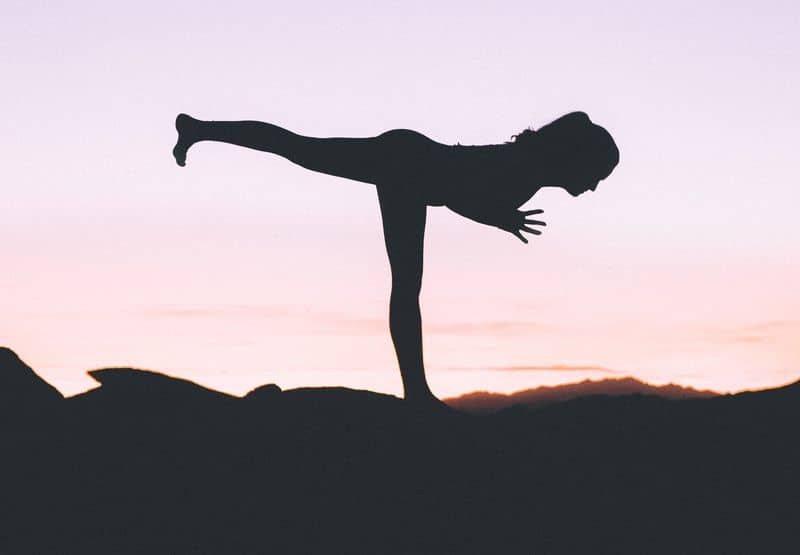
by Tirtha Acharya | Nov 11, 2020 | Yoga
Yogic power & some Mysterious activities done through Yoga in ancient/ modern time
Many people imagine that yoga is all about bending and twisting the body, as it is what Medias shows to people. However, yoga is more than bending and twisting the body, yoga focuses on going inward and concentrating on the thoughts in the subtle level, to achieve the extraordinary things in life. Many ancient yogis and modern yogis describe yogic power as the ability to evoke out the hidden potential with the human being.
There are umpteen of yoga teaching and practices available throughout the world. In a bid to evoke out the yogic power within the self, it is of utmost importance to choose the congenial yoga practices in your life. Yogis have attained beyond the limitations of the human being by cultivating yoga in their daily routine thus evoking out the yogic power. Many works of literature blatantly say that no human being has not attained the full potential of their mind, body, and soul. Yoga is the superpower that acts as a catalyst to go beyond the mortal power and evoke the mystic or yogic power.
In this article, we will delve into mysterious things that have been done in the past through yogic power by the rishis and maharishis.
Survive on air through yogic power
Pranayama is what yogis’ resort to nullify the physical nourishment. Yogis strongly believe that the human body is the mirror of the minds and there is no need to depend on the foods to survive for a few days. However, how could this become a reality? Yogis depend on the simple principle of going into deep relaxation by subsiding breathe. By practicing such a mind slowly starts to become less aware of human consciousness, time, and energy. For instance, people resorting to such starts to feel the hours of meditation seem only of a few minutes or seconds.
The simple principle of avoiding the physicality by plummeting the metabolic activity can do some magic thus results in low physical activity and thus slow pulse rate and respiration. In such states, the body does not require any sorts of physical nourishments.
Some yogis like Yogi Prahlad Jani had lived for more than 70 years without resorting to foods and drinking. There is a lot of documentary on Yogi Prahlad Jani to verify his claim. So, the yogic power is amazing. Start follow the yoga path from today.
Acquaintance with the past lives
Yogis know past lives too. Due to the simple, yet inquisitive questions like ‘WHO AM I?’ WHAT IS THE PURPOSE OF MY LIFE? WHY DID I COME TO THIS EARTH? and the quest to answer takes the spiritual journey to the interesting mode of knowing the past lives. Nevertheless, it requires a high level of concentration and the ability to bestow time, energy, and focus. Using the spiritual practices, which they follow religiously, takes them beyond the physicality that ultimately amazes the normal human being with the truth.
Embracing death with the exactness of time
Did you know a seasoned yogi could choose the time to leave this mortal coil? Death is inevitable truth and seasoned yogis can take control of the time and place of their death in a bid to attain the Mahasamadhi. They could consciously leave the mortal coil. Some of the prominent Yogis in the past have left their mortal coil consciously. The list includes Yogi Paramahansa Yogananda and many others.
Control over nature through yogic power
Yogis have supernatural power to take control over not only their thoughts and imagination but also to nature. The superconscious of seasoned yogis can evoke out the super yogic power at focusing on the inside world, and steadily shifting out of the 5 senses to the supernatural power. Thus, giving them the power to take control of their mind and the surrounding.
Living for a longer period
There are many instances where yogis have lived for more than 100 years. Many works of literature claim that Himalayan yogis have lived for more than 150 years and this is all possible due to the yogic power. For instance, Devraha Baba has lived for more than 150 years.
Defying gravity
Yogis can defy gravity and can levitate in the air for a longer period. This is possible due to the supply of oxygen to every cell through Pranayama. The experience of feeling light comes into action after being oxygenated thoroughly. Certain works of literature that claim yogis can levitate for hours on end.
Yogis can tolerate extreme temperatures
In the past, Yogi has been able to meditate for months in extreme weather conditions. Yogis meditate at high altitudes and they are not affected by the cold conditions. It is all possible due to the yogic power. Yogis can take control of their minds and body also. They can control to the extent that they can regulate their body temperature to tolerate the extremities.
Yogis can heal the wounds without suffering much by means of yogic power
The healing is possible due to yogic power.
Yogis can remain celibate for the whole life
Yogis eat Sattva foods and remain healthy

